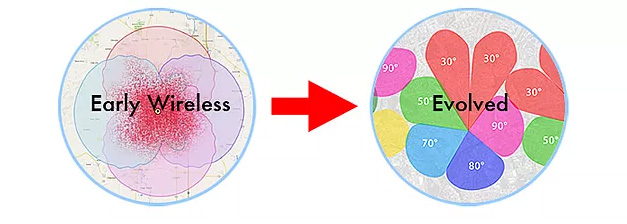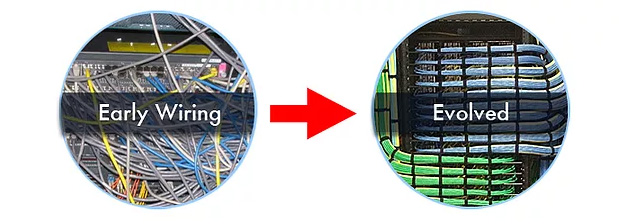Blog
The Good, the Bad and the Ugly for Fixed Wireless ISPs

We're in the midst of a telecom gold rush and it’s called “fixed wireless”.
The opportunity for the industry and the underserved world is immense. In time, it will lead to tectonic shifts in broadband delivery from telcos to internet juggernauts like Google,Amazon and Facebook. In the run-up, hundreds, maybe thousands of WISPs will make fortunes, but many others will fail as well, because all that glitters isn't gold.
Mining fixed wireless is about proper planning and spectrum management, but lately I'm hearing a lot about a "cowboy mentality" that threatens the industry and invites carrier encroachment. To learn more I talked to a couple of WISPs in Nebraska. In full disclosure, I don't really think they're cowboys, but they're in the second biggest cattle state after Texas, so that should count for something.
Meet Prairie Hills Wireless
Fixed wireless thrives on humble roots. Take Kent and Sara Urwiller. They started Prairie Hills Wireless in 2013 to bring affordable broadband to their hometown of Ravenna. Seed money came from the sale of Kent’s Camaro, and his Dad, a farmer and cattle rancher, helped spread the word from his roadside stand.
Kent connected house after house from the back of his truck, sometimes upwards of ten a day when his Dad pitched in. He had one thing in mind—quality, and that enabled him to grow to 2,000 subscribers before hiring his first tech.
Early installations were Ubiquiti radios, but later Kent standardized on Mimosa Networksand Cambium, mixing unlicensed and licensed spectrum as needed. Today Prairie Hills serves 75% of Buffalo County with a network that includes 40 towers, but other WISPs are on their borders.

Flatwater Wireless is in Kearney County, and the northern part of their network abuts Kent’s. Flatwater was founded by Dustin Schroll in 2016, and he’s bringing internet access to many homes that never had it. His standard service is 12.5 Mbps for $46.00/month and he offers rates up to 50 Mbps.
Then there’s KDSI, which operates in neighboring Hall county. They started as a pipe supply company, going back 100 years, and they got into telecom in the 1990’s with dial-up internet. Now they offer fixed wireless.
Think competition's a problem? Think again.
These WISPs meet regularly to compare frequency plans. They know that interference hurts everyone, and so they work together like neighbors wanting to preserve property values.
But now these guys really push the envelope on the good neighbor concept. For instance, on Christmas night, 2016, a powerful storm ripped through Kent’s network, damaging towers that supported over 100 customers. By 10:30 p.m. winds had died down to 45 mph, and Kent and his Dad jammed out to start restoring service. And who was there to meet them, but Dustin.
The three worked through the night, and by noon the next day every customer was back. It wasn't the first time Dustin came to save the day, and likewise, he gets help from Kent with his own installations.
Whoa, let's celebrate the real "cowboy mentality"!
It's about hard work, neighbors helping neighbors, never accepting excuses, and always taking care of the customer. Kent and Dustin are deliberate about every installation, every frequency, and even the antennas they use. Google their references. It's no surprise that customers love them, giving them 5/5 stars, and rave reviews.
But other WISPs aren't so conscientious.
They're gunning for market share so they can cash in when buyers come knocking. They use the cheapest radios, the noisiest antennas, they're lousy in the field and unresponsive to customers. Their service sucks, and so to win customers they offer gifts like "free" iPads and prepaid Visa cards.
I'm not naming names, but their references say it all. Customers hate them. You'd think they were cable providers. And if casting a pall on fixed wireless isn't enough, WISPs with lousy networks are the worse RF polluters. Their answer to everything is more. More power, more signal and more gain. #Sad
This is a terrible mindset that adds noise to the environment and throttles bandwidth to the end user. Likewise, it's a bad idea to use 90 or 120 degree sector antennas if you're covering a tight zone. Why blanket the region with excess signal?
There's a better way, as Kent and Dustin will tell you. It's in the form of RF elements (small "e") innovative horn antennas.
Horns make good neighbors.
You’ve heard the adage “good fences make good neighbors”. Well, the same goes for symmetrical horn antennas by RF elements. These are a huge innovation, replacing sloppy traditional sectors that bleed RF everywhere, with antennas that produce no side lobes, minimize colocation noise and deliver signals precisely where they're needed.
See the below pics. The left, "Early Wireless", shows typical sectors on a tower. The red blotch in the center is self-interference from radios on the same tower, and the larger rings show 90 degree sectors totally overlapping each other. In a word, it's a mess.
By contrast, the right pic shows those same radios, except with horn antennas that go from 30 to 90 degrees in 10 degree steps. Note how beam patterns are clean and distinct.

The result is a vast improvement in signal to noise, not only for the provider, but for other operators as well. Aaron Larson owns a WISP in Homer, Alaska, and he put it perfectly: "Horns are the first time I've had something that works great that I also really want my competitors to use as well."
The difference between traditional sectors and horns reminds me of cabling in switch rooms. Remember when switches were a rat's nest of Cat 5 cable? These days cabling is practically an art. Every wire is perfectly dressed and precisely routed. It's about sustainable growth, just like horn antennas.

"Disruptive" technology? Absolutely not.
Traditional sectors are disruptive, but horn antennas play nice. It's why Kent and Dustin placed horns where their networks border each other's. Dustin remarked, "They’re easy to bring up a tower, you can pop them up real quick and just eyeball them." "One time," he added, "I had three customers interfering with each other and they were on a 90-degree sector. I swapped it for a 30-degree horn and immediately saw a 10dB improvement. Horns improve the signal no matter where you put them."
Horn antennas are a departure from the early days of fixed wireless, when providers aimed for maximum transmit power and antenna gain, deploying wider sectors than necessary. But RF elements cautions about the correlation between power and noise. Raising one increases the other. And so they advise reigning in power and gain, and using precise horns to deliver signal just where it's needed. It's a message that's hard for some WISPs to accept, because it seems counterintuitive. But don't doubt, believe!
If you're looking for a more technical discussion, check out my post on RF elements from October [link], visit RFe's lab and see what their customers are sharing on Facebook.
Conclusion
Effective spectrum management is a good neighbor policy that helps everyone, and it's the only way to grow a WISP and maximize value. A major challenge however, is the lack of uniform standards, and so while most WISPs do amazing work, others run amok with little care for quality, reliability and support.
It’s a real concern, because poor performance can tarnish the industry, diminish the value of unlicensed spectrum and invite encroachment by big carriers. Let's not let that happen.
I'm an unabashed fan of RF elements. WISPs love them and they're bringing real innovation to facilitate growth and recover enormous amounts of wasted spectrum. If you're a WISP, give them a try, but don't keep your success a secret. If your competition uses horns you'll see your own network improve, so share your before and after stats with us and let's encourage everyone to follow your lead.
Thanks to Kent Urwiller and Dustin Schroll for talking to us and setting a great example for the industry.
And thanks for reading! Likes, shares and comments are much appreciated, so please let me know what you think.
DISCLAIMER: This is a repost of a blog written by David Theodore and originally published here. Many thanks to David for letting us share his article.
reach out to you.
Hurray!
Thanks for your question. We will process it in the shortest time possible.
Subscribe to Our Newsletter
Latest news about wireless networking, our products and special offers straight to your inbox.
